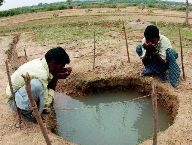
Central Ground Water Board (CGWB) is periodically monitoring the ground water levels throughout the Country on a regional scale, through a network of monitoring wells. In order to assess the long term fluctuation in ground water levels, the water level data collected by CGWB during November 2021 have been compared with the decadal mean of November (2011-2020). Analysis of water level data indicates that about 30% of the wells monitored have registered a decline in ground water level whereas, 70 % wells have registered rise (in ground water levels). The State-wise details in this regard are given at Annexure I.
Further, CGWB has not conducted any specific study on the reasons and consequential effects of decrease in ground water level, however, ground water levels in various parts of the country appear to decline mainly because of continuous withdrawal due to reasons such as increased demand for freshwater for various uses, vagaries of rainfall, increased population, industrialization & urbanization etc.
Though Water is a State subject, Central Government has taken a number of important measures for conservation, management of ground water including effective implementation of rain water harvesting in the country, which can be seen at URL:http://jalshakti-dowr.gov.in/sites/default/files/Steps_to_control_water_depletion_ Feb2021.pdf. Some of the important initiatives in this regard are also given at Annexure II.
Further, Government of India launched Jal Shakti Abhiyan (JSA) in 2019 which continued during 2021 also to improve water availability including ground water conditions in the country. Further, the campaign “Jal Shakti Abhiyan: Catch the Rain” (JSA:CTR) was launched by the Hon’ble Prime Minister on 22 March 2021.
In addition, a number of States have done notable work in the field of water conservation/harvesting such as ‘Mukhyamantri Jal Swavlamban Abhiyan’ in Rajasthan, ‘Jalyukt Shibar’ in Maharashtra, ‘Sujalam Sufalam Abhiyan’ in Gujarat, ‘Mission Kakatiya’ in Telangana, Neeru Chettu’ in Andhra Pradesh, Jal Jeevan Hariyali in Bihar, ‘Jal Hi Jeevan’ in Haryana, and Kudimaramath scheme in Tamil Nadu.
This Information was given by the Minister of State for Jal Shakti, Shri Bishweswar Tudu in a written reply in Rajya Sabha today.
*****
BY/AS
Annexure-I
|
State-wise Decadal Water Level Fluctuation with Mean [November (2011 to 2020] and November 2021 |
||||||||||||||||||||
| S. No. | Name of State | No. of wells Analysed | Rise | Fall | Rise | Fall | Wells showing no change | |||||||||||||
| 0-2 m | 2-4 m | >4 m | 0-2 m | 2-4 m | >4 m | |||||||||||||||
| No | % | No | % | No | % | No | % | No | % | No | % | No | % | No | % | No | % | |||
| 1 | Andhra Pradesh | 706 | 419 | 59.3 | 87 | 12.3 | 50 | 7.1 | 124 | 17.6 | 14 | 2.0 | 11 | 1.6 | 556 | 79 | 149 | 21 | 1 | 0 |
| 2 | Arunachal Pradesh | 10 | 2 | 20.0 | 0 | 0.0 | 0 | 0.0 | 8 | 80.0 | 0 | 0.0 | 0 | 0.0 | 2 | 20 | 8 | 80 | 0 | 0 |
| 3 | Assam | 167 | 71 | 42.5 | 3 | 1.8 | 1 | 0.6 | 83 | 49.7 | 6 | 3.6 | 3 | 1.8 | 75 | 45 | 92 | 55 | 0 | 0 |
| 4 | Bihar | 593 | 395 | 66.6 | 78 | 13.2 | 11 | 1.9 | 102 | 17.2 | 7 | 1.2 | 0 | 0.0 | 484 | 82 | 109 | 18 | 0 | 0 |
| 5 | Chandigarh | 12 | 4 | 33.3 | 2 | 16.7 | 1 | 8.3 | 3 | 25.0 | 1 | 8.3 | 1 | 8.3 | 7 | 58 | 5 | 42 | 0 | 0 |
| 6 | Chhattisgarh | 687 | 290 | 42.2 | 66 | 9.6 | 30 | 4.4 | 230 | 33.5 | 45 | 6.6 | 26 | 3.8 | 386 | 56 | 301 | 44 | 0 | 0 |
| 7 | Dadra & Nagar Haveli | 17 | 15 | 88.2 | 0 | 0.0 | 0 | 0.0 | 2 | 11.8 | 0 | 0.0 | 0 | 0.0 | 15 | 88 | 2 | 12 | 0 | 0 |
| 8 | Daman & Diu | 5 | 2 | 40.0 | 1 | 20.0 | 1 | 20.0 | 1 | 20.0 | 0 | 0.0 | 0 | 0.0 | 4 | 80 | 1 | 20 | 0 | 0 |
| 9 | Delhi | 86 | 29 | 33.7 | 21 | 24.4 | 15 | 17.4 | 12 | 14.0 | 3 | 3.5 | 6 | 7.0 | 65 | 76 | 21 | 24 | 0 | 0 |
| 10 | Goa | 68 | 9 | 13.2 | 0 | 0.0 | 1 | 1.5 | 52 | 76.5 | 5 | 7.4 | 1 | 1.5 | 10 | 15 | 58 | 85 | 0 | 0 |
| 11 | Gujarat | 746 | 278 | 37.3 | 122 | 16.4 | 112 | 15.0 | 140 | 18.8 | 50 | 6.7 | 44 | 5.9 | 512 | 69 | 234 | 31 | 0 | 0 |
| 12 | Haryana | 183 | 66 | 36.1 | 6 | 3.3 | 8 | 4.4 | 65 | 35.5 | 19 | 10.4 | 19 | 10.4 | 80 | 44 | 103 | 56 | 0 | 0 |
| 13 | Himachal Pradesh | 86 | 40 | 46.5 | 5 | 5.8 | 2 | 2.3 | 36 | 41.9 | 1 | 1.2 | 1 | 1.2 | 47 | 55 | 38 | 44 | 1 | 1 |
| 14 | Jammu & Kashmir | 213 | 100 | 46.9 | 4 | 1.9 | 3 | 1.4 | 99 | 46.5 | 4 | 1.9 | 3 | 1.4 | 107 | 50 | 106 | 50 | 0 | 0 |
| 15 | Jharkhand | 198 | 132 | 66.7 | 17 | 8.6 | 1 | 0.5 | 45 | 22.7 | 3 | 1.5 | 0 | 0.0 | 150 | 76 | 48 | 24 | 0 | 0 |
| 16 | Karnataka | 1290 | 709 | 55.0 | 265 | 20.5 | 123 | 9.5 | 159 | 12.3 | 20 | 1.6 | 14 | 1.1 | 1097 | 85 | 193 | 15 | 0 | 0 |
| 17 | Kerala | 1304 | 868 | 66.6 | 145 | 11.1 | 39 | 3.0 | 227 | 17.4 | 17 | 1.3 | 8 | 0.6 | 1052 | 81 | 252 | 19 | 0 | 0 |
| 18 | Madhya Pradesh | 1297 | 590 | 45.5 | 164 | 12.6 | 97 | 7.5 | 345 | 26.6 | 70 | 5.4 | 31 | 2.4 | 851 | 66 | 446 | 34 | 0 | 0 |
| 19 | Maharashtra | 1727 | 856 | 49.6 | 321 | 18.6 | 161 | 9.3 | 317 | 18.4 | 47 | 2.7 | 24 | 1.4 | 1338 | 77 | 388 | 22 | 1 | 0 |
| 20 | Meghalaya | 24 | 10 | 41.7 | 1 | 4.2 | 0 | 0.0 | 13 | 54.2 | 0 | 0.0 | 0 | 0.0 | 11 | 46 | 13 | 54 | 0 | 0 |
| 21 | Nagaland | 2 | 1 | 50.0 | 0 | 0.0 | 0 | 0.0 | 0 | 0.0 | 1 | 50.0 | 0 | 0.0 | 1 | 50 | 1 | 50 | 0 | 0 |
| 22 | Odhisha | 1245 | 650 | 52.2 | 32 | 2.6 | 2 | 0.2 | 517 | 41.5 | 35 | 2.8 | 8 | 0.6 | 684 | 55 | 560 | 45 | 1 | 0 |
| 23 | Pondicherry | 6 | 3 | 50.0 | 1 | 16.7 | 0 | 0.0 | 2 | 33.3 | 0 | 0.0 | 0 | 0.0 | 4 | 67 | 2 | 33 | 0 | 0 |
| 24 | Punjab | 176 | 46 | 26.1 | 7 | 4.0 | 1 | 0.6 | 74 | 42.0 | 38 | 21.6 | 10 | 5.7 | 54 | 31 | 122 | 69 | 0 | 0 |
| 25 | Rajasthan | 918 | 248 | 27.0 | 80 | 8.7 | 44 | 4.8 | 290 | 31.6 | 114 | 12.4 | 141 | 15.4 | 372 | 41 | 545 | 59 | 1 | 0 |
| 26 | Tamil Nadu | 538 | 201 | 37.4 | 146 | 27.1 | 113 | 21.0 | 54 | 10.0 | 13 | 2.4 | 11 | 2.0 | 460 | 86 | 78 | 14 | 0 | 0 |
| 27 | Telangana | 537 | 203 | 37.8 | 114 | 21.2 | 133 | 24.8 | 73 | 13.6 | 5 | 0.9 | 9 | 1.7 | 450 | 84 | 87 | 16 | 0 | 0 |
| 28 | Tripura | 22 | 8 | 36.4 | 0 | 0.0 | 0 | 0.0 | 11 | 50.0 | 3 | 13.6 | 0 | 0.0 | 8 | 36 | 14 | 64 | 0 | 0 |
| 29 | Uttar Pradesh | 646 | 358 | 55.4 | 102 | 15.8 | 21 | 3.3 | 118 | 18.3 | 32 | 5.0 | 15 | 2.3 | 481 | 74 | 165 | 26 | 0 | 0 |
| 30 | Uttarakhand | 45 | 23 | 51.1 | 3 | 6.7 | 2 | 4.4 | 9 | 20.0 | 4 | 8.9 | 4 | 8.9 | 28 | 62 | 17 | 38 | 0 | 0 |
| 31 | West Bengal | 721 | 417 | 57.8 | 87 | 12.1 | 34 | 4.7 | 117 | 16.2 | 34 | 4.7 | 31 | 4.3 | 538 | 75 | 182 | 25 | 1 | 0 |
| Total | 14275 | 7043 | 49.3 | 1880 | 13.2 | 1006 | 7.0 | 3328 | 23.3 | 591 | 4.1 | 421 | 2.9 | 9929 | 70 | 4340 | 30 | 6 | 0 | |
Annexure II
Important initiatives on management of groundwater resources
Government of India launched Jal Shakti Abhiyan (JSA) in 2019, a time bound campaign with a mission mode approach intended to improve water availability including ground water conditions in the water stressed blocks of 256 districts in India. In this regard, teams of officers from Central Government along-with technical officers from Ministry of Jal Shakti were deputed to visit water stressed districts and to work in close collaboration with district level officials to undertake suitable interventions.
In addition, Ministry of Jal Shakti has taken up the “Jal Shakti Abhiyan: Catch the Rain” (JSA:CTR) with the theme “Catch the Rain – Where it Falls When it Falls” to cover all the blocks of all districts (rural as well as urban areas) across the country during 22nd March 2021 to 30th November 2021. The campaign was launched by the Hon’ble Prime Minister on 22 March 2021.
Ministry of Jal Shakti, Department of Water Resources, RD & GR (DoWR, RD & GR) is implementing Atal Bhujal Yojana (Atal Jal), a Rs.6,000 crore Central Sector Scheme, for sustainable management of ground water resources with community participation. Atal Jal is being implemented in 81 water stressed districts and 8,774 Gram Panchayats of seven States viz. Gujarat, Haryana, Karnataka, Madhya Pradesh, Maharashtra, Rajasthan and Uttar Pradesh.
Central Ground Water Board (CGWB), in consultation with States/UTs, has prepared ‘Master Plan for Artificial Recharge to Groundwater – 2020’. The Master Plan – 2020 is a macro level plan indicating various structures for the different terrain conditions of the country. The Master Plan – 2020 envisages construction of about 1.42 crore rain water harvesting and artificial recharge structures in the country to harness 185 Billion Cubic Metre (BCM).
National Aquifer Mapping and Management program (NAQUIM) is being implemented by CGWB as part of Ground Water Management and Regulation (GWM & R) Scheme, a Central Sector scheme. NAQUIM envisages mapping of aquifers (water bearing formations), their characterization and development of Aquifer Management Plans to facilitate sustainable management of groundwater resources in the country. NAQUIM outputs are shared with States/UTs for suitable interventions.
Government of India generally supports artificial groundwater recharge/water harvesting works in the country through Mahatma Gandhi National Rural Employment Guarantee Scheme (MGNREGS) and Prime Minister Krishi Sinchayee Yojana – Watershed Development component (PMKSY-WDC), ‘Surface Minor Irrigation (SMI) and Repair, Renovation and Restoration (RRR) of Water Bodies schemes’ a component of PMKSY.
Ministry of Housing & Urban Affairs (MoHUA) has formulated guidelines for the States to adopt measures suitable to local conditions, such as Unified Building Bye Laws (UBBL) of Delhi, 2016, Model Building Bye Laws (MBBL), 2016 and Urban and Regional Development Plan Formulation and Implementation (URDPFI) Guidelines, 2014, wherein adequate focus has been given on requirement of rainwater harvesting and water conservation measures. As per MBBL, all buildings having a plot size of 100 sq.m. or, more shall mandatorily include the complete proposal of rainwater harvesting. 33 States/ UTs have adopted the features of these Bye Laws.



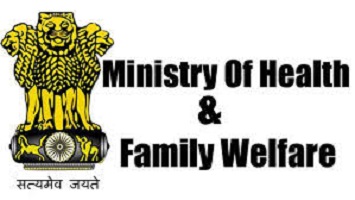
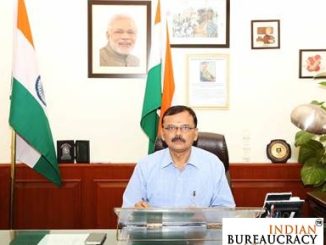
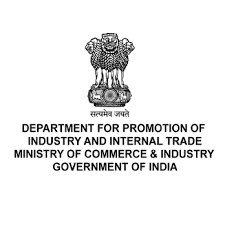
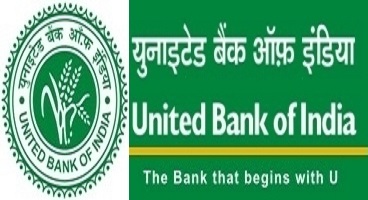
Leave a Reply
You must be logged in to post a comment.